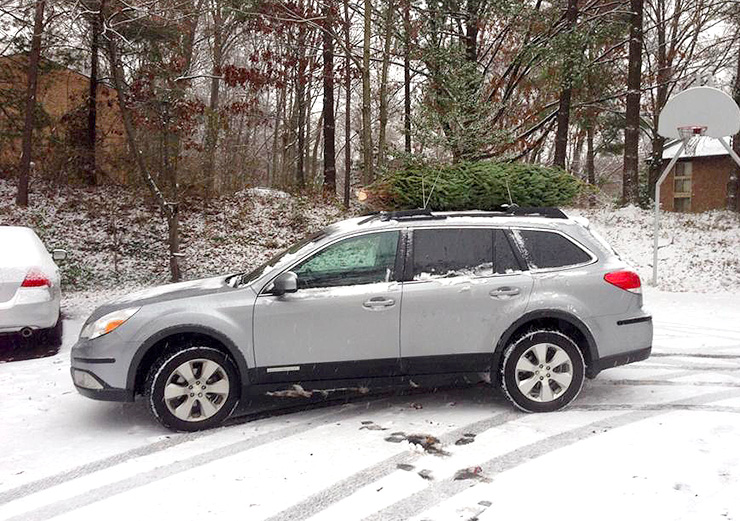Today we’re talking cars for the second and final installment of our Reston Winter Prep series.
So you’ve finally taken home that brand-new (insert car name here) you’ve been saving for. You’ve read the owner’s manual from cover to cover as though it were a romance novel and are pretty confident you can keep the thing healthy and maintained. But what happens when Snowmaggedon Part Deux hits? Your baby is about to be pummeled by hail, buried in snow and frozen in frigid temps.
Fear not, Car Owner, we have put together a handy list of the most important things, aside from regular maintenance, to consider when winterizing your car.
1. Adjust Your Engine Oil
Oil thickens as it gets colder. If it’s too thick it won’t lubricate your engine properly. During the winter months, you’ll want to switch to a thinner―less viscous―oil. According to DMV.org, if you run a 10W-30 in the summer, for example, try moving to a 5W-30 when changing your oil in the fall or winter. Whatever that means. Check your manual or contact the manufacturer for the correct oil for your particular car. The kind people at the oil change place should be able to advise you, too.

2. Keep Your Battery Alive
Interstate Batteries states that a vehicle’s battery loses 33% of its power when the temperature dips below freezing, and over 50% of its power when the temperature falls below zero. Be sure to have your battery and all the connections inspected to avoid stalling.
While you’re inspecting the battery, check the manufacture date. Knowing how old your battery is will give you a sense of when it will begin to lose charge.
3. Switch Out Your Tires
If you live in a place that experiences extreme cold winter temperatures, it is recommended that you install winter tires when winterizing your car. When the temperature is around or below freezing, rubber in non-winter tires harden, decreasing the tire’s ability to grip the road. Winter tires are engineered to resist hardening to provide better traction.
If you are like me, your car is already fitted with all-season tires. I was under the impression that I could skip this step until I read what Popular Mechanics had to say. According to their tests, winter tires out-performed all-season tires at every turn. They concluded that if you live anywhere north of the Mason-Dixon line, it’s a good idea to invest in winter tires. We live close enough to the Mason-Dixon line and weather has become more severe in the past few years, so this is worth considering.
Also, be sure to frequently check the air pressure because tires begin to lose pressure as the temps drop.
4. Replace Windshield Wipers and Wiper Fluid
Low visibility can make driving in cold weather extremely dangerous, so it’s important to make sure the wiper blades are up to par. Wiper blades are made out of rubber so they crack, split and deteriorate. It’s suggested that you replace your windshield wipers every six to twelve months.
Be sure to fill up your wiper fluid. A bottle used to last me forever in California. I am flabbergasted at how quickly I go through it here in Virginia. I find myself squirting it all the time during the winter to break up snow, ice and freezing rain on the windshield.
5. Protect Your Paint
Dirt and road salt can affect your car’s paint finish, and not in a good way. To protect it, apply a fresh coat of wax and wash your car regularly during the winter months to prevent build up.
6. Keep Your Fuel Tank Full
Aside from running out of gas, I didn’t know why this step was important. It turns out that cold and constantly shifting temperatures can form condensation on the walls of your gas tank causing water to drip down into the gas. This will then sink to the bottom, since water is heavier than gas. The water can then find its way into fuel lines, freeze, and block the flow of gas to the engine. Keeping the tank full will prevent this.
7. Stock Your Emergency Kit
Make sure you have the proper supplies in case you slide off the road and get stuck in a snow bank. At the very least, the DMV recommends keeping the following items in your car in case of emergency:
- Flares
- Blankets
- Boots
- Radio
- Engine oil
- Washer fluid
- Coolant
- Flashlight
These 7 simple steps will help keep you and your car safe and sound as you dash from holiday party to holiday party. What you do once at said holiday party is up to you, but remember, don’t drink and drive!
Related Articles:
Reston Winter Prep: 5 Ways to Winterize Your Home Cheaply
Kissing Cable Goodbye & Saying Hello to Streaming Content
Before & After: A Dingy 1970s Bathroom Becomes Bright & Modern


